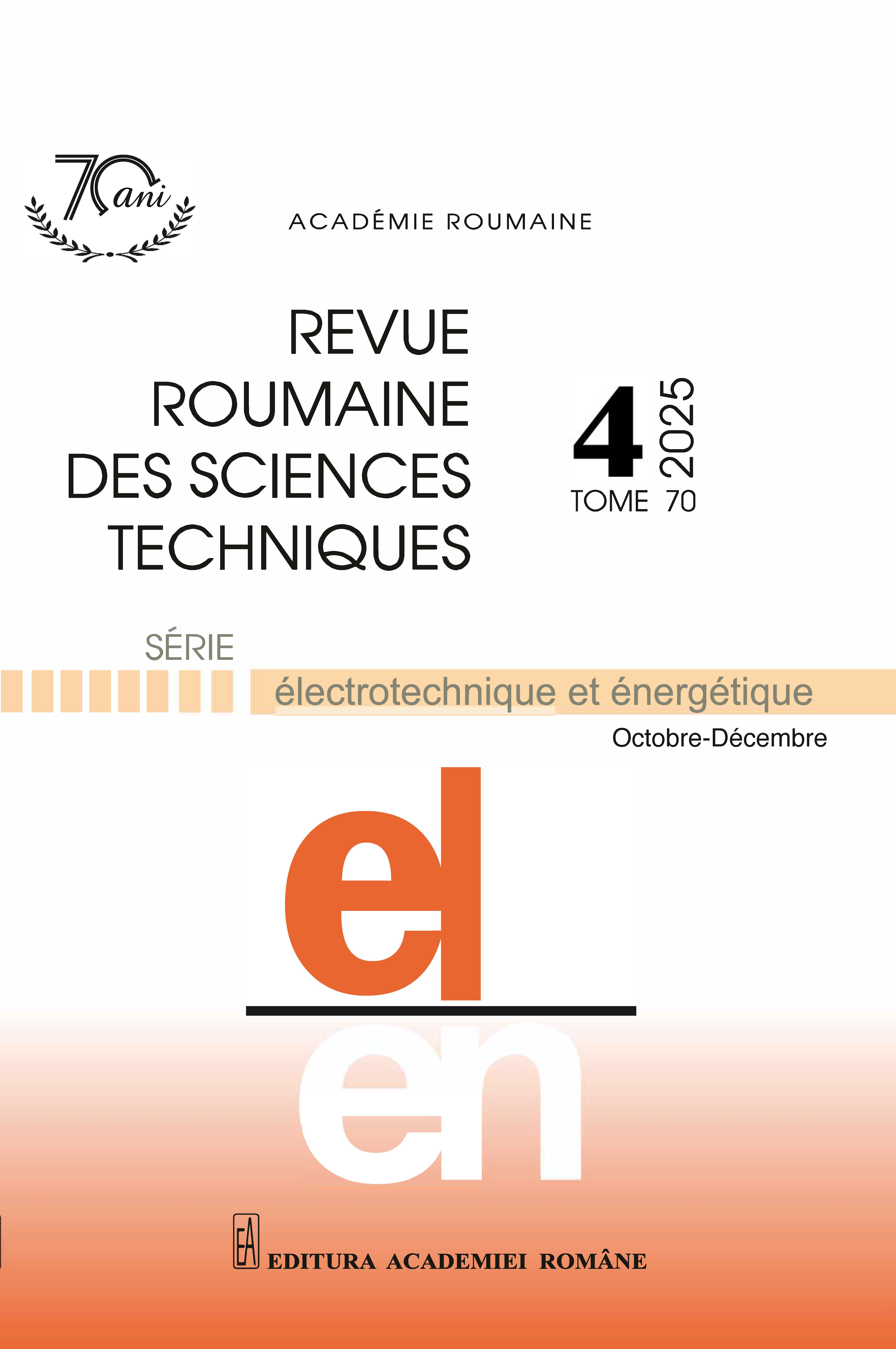REAL-TIME VEDIC MATHEMATICS BASED MEMORYLESS ARITHMETIC CIRCUITS VERIFICATION TECHNIQUE
DOI:
https://doi.org/10.59277/RRST-EE.2025.4.15Keywords:
Testing, Formal verification, Vedic mathematics, Arithmetic circuits, Test vectors, Very large scale integration (VLSI)Abstract
This paper proposes a new method for verifying arithmetic circuit operations based on the Vedic mathematics Sutra (formulae) “Gunita Samuccaya”. According to this sutra, our proposed method verifies arithmetic operations, e.g., c = a + b, by checking whether the sum of 'a' and 'b' digits equals the sum of digits of 'c' for correct computation. In contrast to built-in self-test (BIST) schemes, our approach is simpler, eliminating traditional test pattern generators and output analyzers while achieving 100% fault coverage for simple arithmetic operations. Our system, designed in Verilog hardware description language (HDL), is real-time, memoryless, and scalable. This proposed testing method revolutionizes arithmetic circuit verification, guaranteeing the integrity of intricate digital systems where mathematical precision is vital.
References
(1) M. Kubo and M. Fujita, Debug methodology for arithmetic circuits on FPGAs, In IEEE International Conference on Field-Programmable Technology (FPT) Proceedings, Hong Kong, China, IEEE, pp. 236–242 (2002).
(2) R. Kaivola, R. Ghughal, N. Narasimhan, A. Telfer, J. Whittemore, S. Pandav, A. Slobodov´a, C. Taylor, V. Frolov, E. Reeber, and A. Naik, Replacing testing with formal verification in Intel® CoreTM i7 processor execution engine validation, In A. Bouajjani and O. Maler (eds.), Computer Aided Verification, Springer, Berlin, Heidelberg, Lecture Notes in Computer Science, vol. 5643 (2009).
(3) M.D. Aagard, R.B. Jones, R. Kaivola, K.R. Kohatsu, and C.H. Seger, Formal verification of iterative algorithms in microprocessors, Proceedings of the 37th ACM/IEEE Design Automation Conference (DAC 2000), ACM Press, Los Angeles, pp. 201–206 (2000).
(4) C.M. Kalaiselvi and R.S. Sabeenian, Design of area-speed efficient Anurupyena Vedic multiplier for deep learning applications, Analog Integr Circ Sig Process, 119, pp. 521–533 (2004).
(5) A. Biere, M. Kauers, and D. Ritirc, Challenges in verifying arithmetic circuits using computer algebra, In 19th International Symposium on Symbolic and Numeric Algorithms for Scientific Computing (SYNASC), Timisoara, Romania, IEEE, pp. 9–15 (2017).
(6) D. Kaufmann and A. Biere, Improving AMULET2 for verifying multiplier circuits using SAT solving and computer algebra, Int J Softw Tools Technol Transfer, 25, pp. 133–144 (2023).
(7) M. Barhoush, A. Mahzoon, and R. Drechsler, Polynomial word-level verification of arithmetic circuits, 19th ACM-IEEE International Conference on Formal Methods and Models for System Design (MEMOCODE), Beijing, China, IEEE, pp. 1–9 (2021).
(8) S. Abed, M. AlMehteb, W. Mansoor, and A. Gawanmeh, Verification of non-linear arithmetic circuits using functionally reduced and-inverter-graph (FRAIG), Global Congress on Electrical Engineering (GC-ElecEng), Valencia, Spain, IEEE, pp. 118–123 (2020).
(9) A. Yasin, T. Su, S. Pillement, and M. Ciesielski, Functional verification of hardware dividers using algebraic model, IFIP/IEEE 27th International Conference on Very Large-Scale Integration (VLSI-SoC), Cuzco, Peru, IEEE, pp. 257–262 (2019).
(10) F. Farahmandi and P. Mishra, Automated Test generation for debugging multiple bugs in arithmetic circuits, IEEE Transactions on Computers, 68, 2, pp. 182–197 (2019).
(11) D. Ritirc, A. Biere, and M. Kauers, Column-wise verification of multipliers using computer algebra, Formal Methods in Computer Aided Design (FMCAD), Vienna, Austria, IEEE, pp. 23–30 (2017).
(12) B. Yu and M. Ciesielski, Formal verification using don't-care and vanishing polynomials, IEEE Computer Society Annual Symposium on VLSI (ISVLSI), Pittsburgh, PA, USA, IEEE, pp. 284–289 (2016).
(13) B. Yu, W. Brown, D. Liu, A. Rossi, and M. Ciesielski, Formal Verification of Arithmetic Circuits by Function Extraction, IEEE Transactions on Computer-Aided Design of Integrated Circuits and Systems, 35, 12, pp. 2131–2142 (2016).
(14) S. Ghandali, C. Yu, D. Liu, W. Brown, and M. Ciesielski, Logic Debugging of Arithmetic Circuits, In IEEE Computer Society Annual Symposium on VLSI, Montpellier, France, IEEE, pp. 113–118 (2015).
(15) O. Sarbishei, B. Alizadeh, and M. Fujita, Arithmetic circuits verification without looking for internal equivalences, 6th ACM/IEEE International Conference on Formal Methods and Models for Co-Design, Anaheim, CA, USA, IEEE, pp. 7–16 (2008).
(16) O. Sarbishei, M. Tabandeh, B. Alizadeh, and M. Fujita, A formal approach for debugging arithmetic circuits, IEEE Transactions on Computer-Aided Design of Integrated Circuits and Systems, 28, 5, pp. 742–754 (2009).
(17) M. Ciesielski, C. Yu, W. Brown, D. Liu, and A. Rossi, Verification of gate-level arithmetic circuits by function extraction, In 52nd ACM/EDAC/IEEE Design Automation Conference (DAC), San Francisco, CA, USA, IEEE, pp. 1–6 (2015).
(18) F. Farahmandi, B. Alizadeh, and Z. Navabi, Effective combination of algebraic techniques and decision diagrams to formally verify large arithmetic circuits, IEEE Computer Society Annual Symposium on VLSI, Tampa, FL, USA, IEEE, pp. 338–343 (2014).
(19) M.R. Kumar and R. Sundaram, Effective feature extraction method for unconstrained environment: local binary pattern or local ternary pattern, Rev. Roum. Sci. Techn. – Électrotechn. et Énerg., pp. 449–454 (2024).
(20) 20. P. Nagarajan, T. Kavitha, N.A. Kumar, Al.S. Edward, Power energy and power area product simulation analysis of master-slave flip-Flop, Rev. Roum. Sci. Techn. – Électrotechn. et Énerg., pp. 325–330 (2023).
(21) A. Ramaiah, P.D. Balasubramanian, A. Appathurai, and N.A. Muthukumaran, Detection of Parkinson’s disease via Clifford gradient-based recurrent neural network using multi-dimensional Data, Rev. Roum. Sci. Techn. – Électrotechn. et Énerg., 69, 1, pp. 103–108 (2024).
(22) L. Sriraman, K.S. Kumar, and T.N. Prabakar, Design and FPGA implementation of binary squarer using Vedic mathematics, Fourth International Conference on Computing, Communications and Networking Technologies (ICCCNT), pp. 1–5 (2013).
Downloads
Published
Issue
Section
License
Copyright (c) 2025 REVUE ROUMAINE DES SCIENCES TECHNIQUES — SÉRIE ÉLECTROTECHNIQUE ET ÉNERGÉTIQUE

This work is licensed under a Creative Commons Attribution-NonCommercial-NoDerivatives 4.0 International License.


